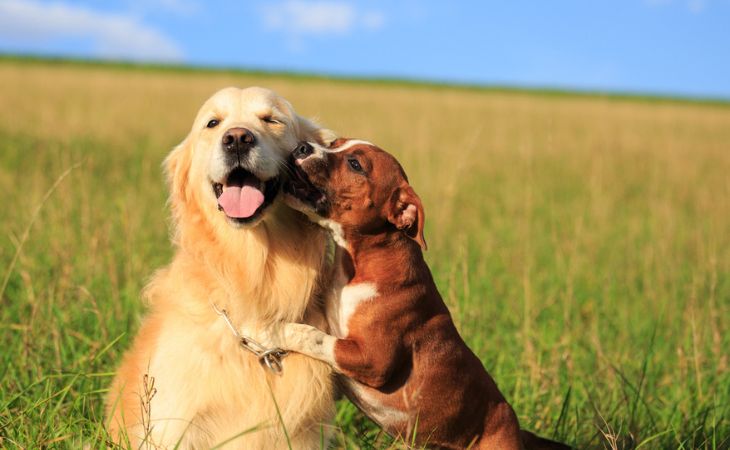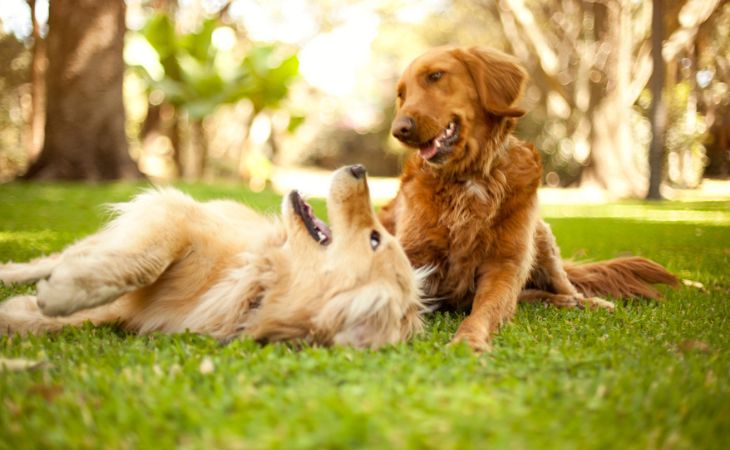Before you decide to adopt a second dog, it’s important to consider all the ramifications of this decision. Many factors need to be taken into account to determine if having a second dog is the right thing for you and your dog. For example, how do you know if your dog needs or wants a friend? How do you ensure that the cohabitation runs smoothly?
How do you know if your dog needs company?
Many signs could show that your dog needs a companion. Some of the most common include boredom, an appreciation for other dogs, and their desire and ability to share.
Your dog is bored
Some pets have a harder time dealing with loneliness than others. Unfortunately, when dogs are not well stimulated, it could lead to various issues, such as hyperactivity, repetitive disobedience, and behavioral issues. To avoid these types of issues, it could be a great idea to adopt a second dog! This would allow your dog to stay entertained, occupied, and blossom.
To find out if your dog is bored, observe their behavior closely. Generally, bored dogs can have abusive behavior. Their goal in acting like this is to attract your attention. They believe it will encourage you to play with them and spend time with them. In other words, their boredom is reflected through their unmanageable character, disobedience, and excessive restlessness.
When dogs are bored, it’s more likely for them to do naughty things. For example, they might pee everywhere, tip over a garbage bin, steal food without being hungry, or break objects. In some cases, they might bark non-stop for no reason. They could also become aggressive or go against your authority. These behaviors shouldn’t be seen as a rebellion, but instead as symptoms showing their discontent deep within.
In serious situations, your dog could suffer from depression. It causes melancholy and lethargy in them. They could stop react to your solicitations and have appetite issues. In addition, boredom could cause pets to hurt themselves by licking or scratching themselves. This is a compulsive behavior that can cause significant injuries.
This Letsgetpet article might interest you: What can I do if my dog barks a lot?
Your dog likes other dogs and know how to share
If you want to know whether or not your dog wants company, take the time to observe how they act with other dogs. When they are enthusiastic and having fun with other animals of the same species, it means that they appreciate their presence. By sharing their food, toys, and personal space with them whenever given the opportunity, your dog is showing their desire to be loved by other dogs.
If they become sad and closed off after the other dogs have left, it means that they need company and would be willing to accept another dog in the family. To keep them happy and fulfill their desire to spend time with other dogs, you can adopt a second dog. Together, they can keep themselves entertained, go for walks, interact together, and depending on the case, procreate.
To do this, they need to be a gentle dog. They are likely to transmit many of their personality traits to their new companion and that’s why it’s important to train and educate them.
As you are their owner, they need to obey you. In your presence, and when you aren’t home, your dog needs to stay disciplined and well-behaved. A good pet will not destroy the house by playing and ensure that they use the space that is attributed to them to have fun.

How do I help make cohabitation between the two dogs run smoothly?
To encourage your dogs to live together harmoniously, you should put into place an atmosphere that makes their cohabitation easier.
Presenting your first dog to your second dog
To encourage harmonious cohabitation, you should present your new dog to your first dog. Plan a meeting in an area that is large and well-ventilated. It can be a park, a farm, or a garden. Then, make sure to keep both of the dogs on a leash so that they can sniff each other and get to know each other. Generally, dogs can start to growl or bark at the other. Walk with them for around 15 minutes and do this a few more times during the next two to three days.
Let your second dog visit your home to allow them to to get a feel for the place and find their bearings. Show them the zones that are not allowed and show them spaces that are reserved for your first dog. You can decide to include your first dog during this visit depending on the character of your dog and their reaction to the new dog. This will improve their mutual tolerance and their continuous contact.
Organizing spaces and mealtime
Keeping two dogs in the same space could cause conflicts. For instance, your first dog might refuse to share their space. To avoid damage that this type of situation could create, prepare another space for your second dog. Ensure that the space is comfortable and clean. Provide the two dogs with a common area to help them get to know each other better, play together, and develop a bond.
Be careful when it comes to mealtime and breaks. First, their food should be placed in different bowls. Take into account their breed and age to choose a balanced and suitable diet for them. When you adopt a second dog, teach them to respect the time and eat calmly. Serve the food to your two dogs at the same time and ensure that the content of the bowls is proportional. During the first few weeks of their cohabitation, keep a close eye on their reactions and separate them if you notice any sign of conflict.
The dominant-dominated hierarchy
Hierarchy is natural among animals that live together. After their first meeting, your dogs will establish a dominance system that will allow them to live in harmony with one another. The second dog will try to impose themselves on the former leader. Your first dog might search to mark their territory in order to control the new dog. You need to be very observant and avoid getting yourself involved in their duel. This can last days, even weeks, depending on the breed.
The attempt to seize power can be shown through fights, growling, or excessive barking. During this time, they are trying to intimidate each other. In the end, the losing dog will acquire the role of the dominated and submit to the winner. During mealtime, feed the dominant dog first to avoid the dominant dog thinking that the food of the dominated is theirs. Treat the two dogs the same and do not intervene in the established order.
Should the second dog be an adult dog or a puppy?
Adopting dogs that are the same age but different genders is an excellent idea. This is because the hierarchy will establish itself easily. In general, the male establishes their domination without taking advantage. When it’s the female who takes the reins, however, in most situations she can get carried away.
If you have an adult dog, adopting a puppy is also a suitable decision. The older dog will be able to guide the younger dog. The younger dog will also submit to their authority. The younger dog will learn good habits and the rules of the house quickly. Training them will also easier when you have a female. By living with the new puppy, her maternal instincts will kick in, which will push her to educate the dog correctly.
Before choosing the age of the second dog, take into account your availability. If you decide to adopt a puppy, ensure that you have time to teach them good practices. Some dogs need human presence until they are mature to blossom fully.
Take into account your personal needs. If you want to have a puppy later, you could decide to have a duo of adult dogs that are different genders and have not been spayed or neutered. If you want your pets to accompany you on your hikes or protect your house, adopt a second dog that has already finished growing.
Also, if you want to adopt a second dog, take into account your budget. In general, adopting an adult dog is more expensive than adopting a puppy. They are more expensive to adopt and their food is more expensive. Moreover, when it comes to health, the costs associated with their different treatments are higher and because of their older age, their life with you is shortened.

